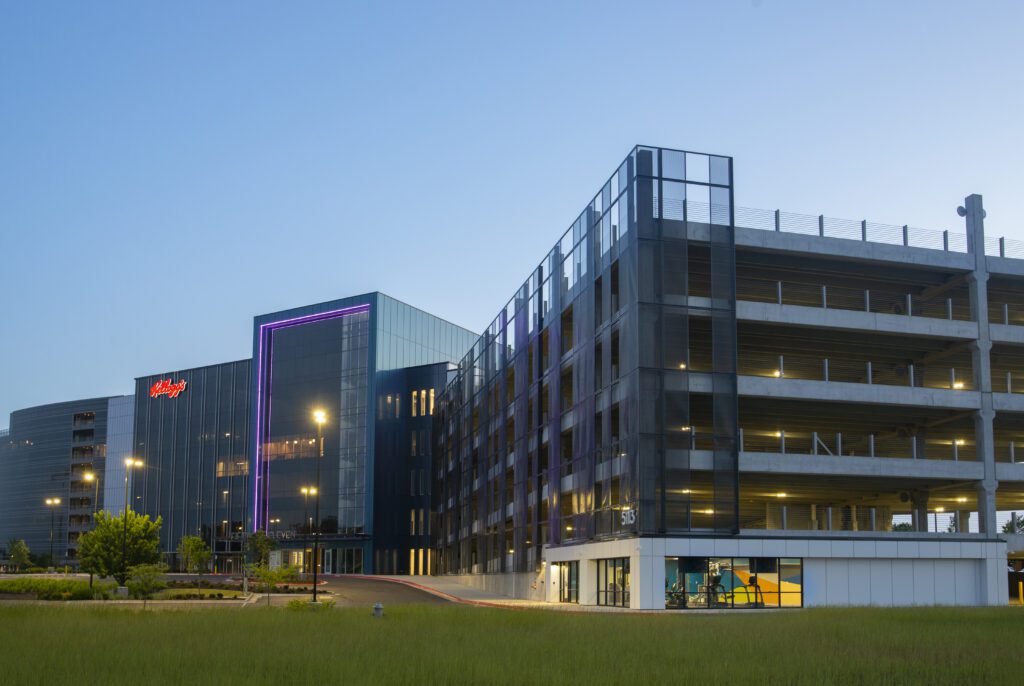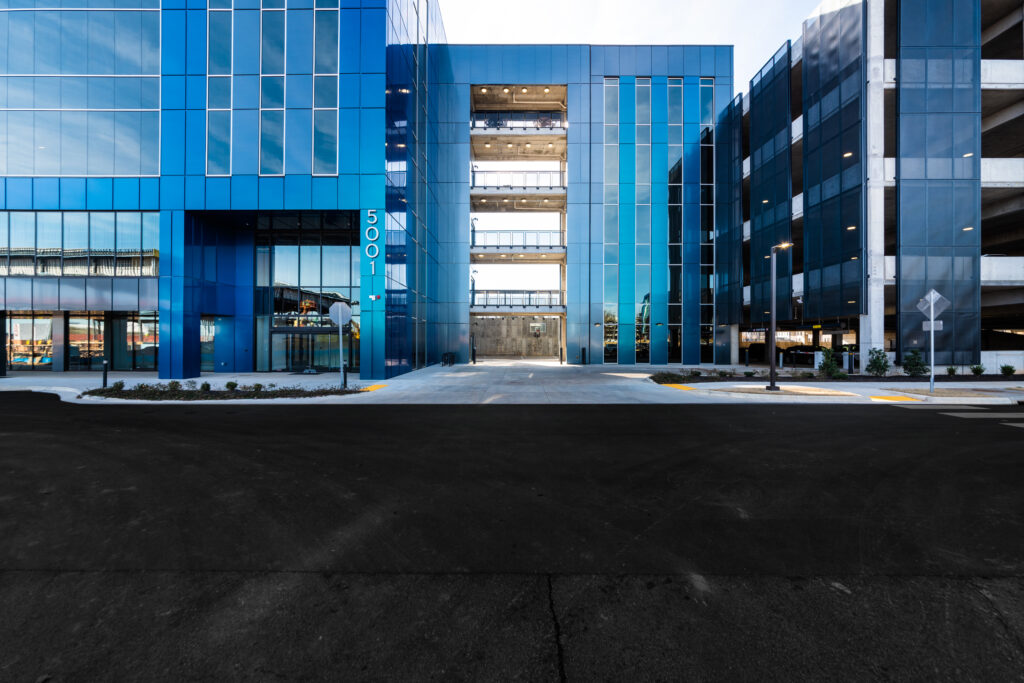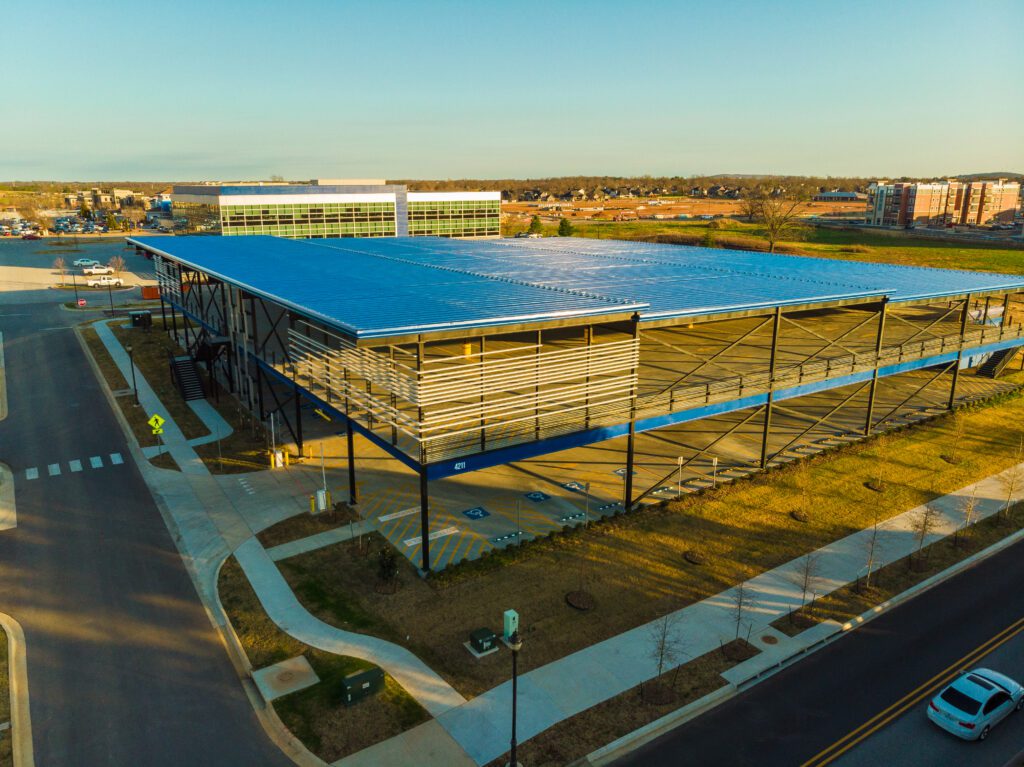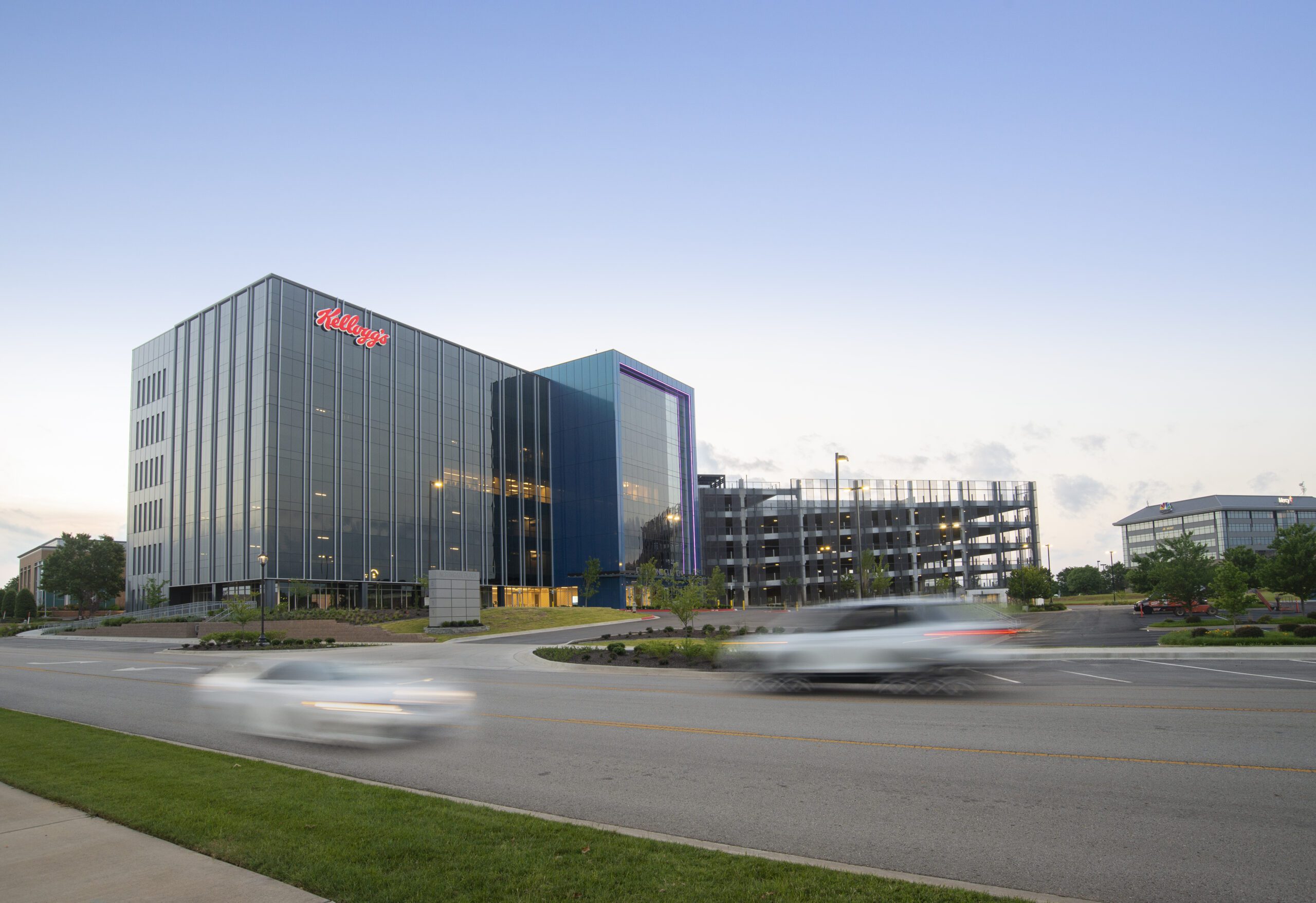When planning a parking garage, choosing the right construction method is crucial for ensuring it meets your project’s requirements in durability, cost, speed, and aesthetic appeal. Here, we explore three common construction methods for parking structures—Precast Concrete, Cast-in-Place Concrete, and Structural Steel—to help you weigh the pros and cons of each.
Precast Concrete Parking Decks

Precast concrete parking decks are composed of prefabricated concrete sections manufactured off-site and then transported and assembled at the construction location. This method is popular for its speed and cost efficiency.
Pros:
- Quick Installation: Precast sections are ready for assembly upon arrival, minimizing on-site construction time and labor costs.
- High Quality and Durability: Manufactured in controlled environments, these sections offer consistent quality and can be designed for maximum durability.
- Cost-Effective for Repetitive Designs: If the structure includes repeating layouts or modular design, this method’s prefabrication process can reduce costs significantly.
Cons:
- Limited Customization: Precast sections are designed in standard shapes and sizes, making it challenging to create unique layouts or intricate architectural details.
- Transportation Constraints: Large precast sections can be costly to transport and may require specialized handling, depending on project location.
- Joining Issues: Sealing the joints between sections is essential to prevent leaks, and over time, joints may require maintenance.
Best For: Projects requiring fast construction with straightforward design and minimal customization.
Cast-in-Place Concrete Parking Decks

Cast-in-place concrete is poured directly at the site, allowing for more custom designs and seamless integration with the surrounding environment.
Pros:
- Design Flexibility: This method allows for curved walls, unique column layouts, and other design elements not possible with precast options.
- Strong Structural Integrity: Since the concrete is poured on-site, the structure can be monolithic, providing a continuous bond and eliminating joints that might weaken over time.
- Cost-Effective for Complex Layouts: Customizable designs are often more economical to build with cast-in-place methods than modifying precast sections.
Cons:
- Longer Construction Time: Cast-in-place concrete requires longer curing times, extending the overall construction schedule.
- Weather-Dependent: Pouring concrete on-site is sensitive to weather conditions, which may delay construction, especially in climates with extreme temperatures.
- Labor-Intensive: This method generally requires more on-site labor and resources, potentially increasing the cost in areas with high labor rates.
Best For: Complex designs and projects that need high customization with unique structural layouts.
Structural Steel Parking Decks

Structural steel is a versatile material for parking garages, often used for long-span layouts with fewer columns, creating open spaces.
Pros:
- Speedy Assembly: Steel components can be pre-fabricated, allowing for quick on-site assembly, similar to precast concrete.
- Long Spans with Open Space: Steel’s strength allows for longer spans without the need for many columns, which is ideal for maximizing space and ease of parking.
- Adaptability for Future Changes: Steel structures are relatively easier to modify or expand than concrete, making it a flexible option for future adjustments.
Cons:
- Higher Material Costs: Steel is often more expensive than concrete, which can drive up initial costs.
- Fireproofing Requirements: Steel structures must meet fireproofing standards, requiring additional treatments or materials that add to the cost.
- Corrosion Risk: In areas with high humidity or exposure to deicing salts, steel structures may require protective coatings and regular maintenance to prevent corrosion.
Best For: Projects prioritizing open layouts, quick assembly, and adaptability for future expansions.
Which Method Should You Choose?
Each method has strengths suited to different project goals. Precast Concrete is ideal for fast, straightforward builds with budget constraints, while Cast-in-Place Concrete offers unparalleled flexibility for unique designs. Structural Steel is best for projects demanding open, spacious layouts and future adaptability.
When selecting a construction method, consider your project’s budget, schedule, design needs, and future maintenance requirements. By understanding the pros and cons of each option, you can make an informed choice that aligns with your project’s vision and practical demands.
Contact us today to discuss which method is right for your next parking garage project! Our experienced team can help guide you through the decision-making process to ensure a structure that’s efficient, durable, and tailored to your unique requirements.
Latest News


